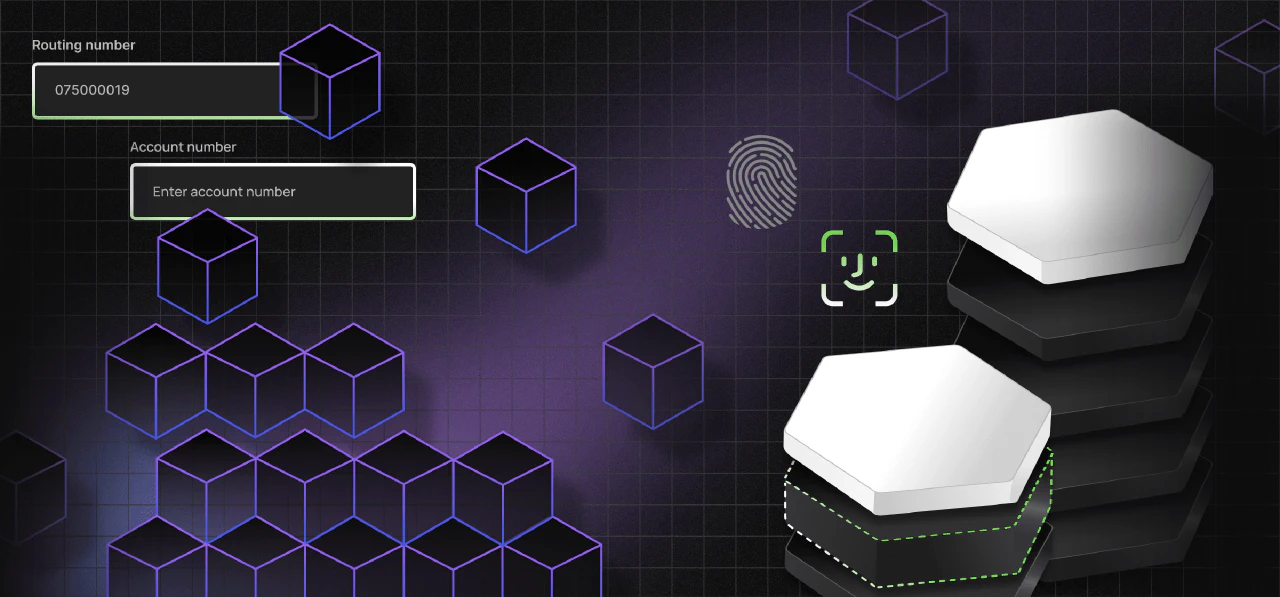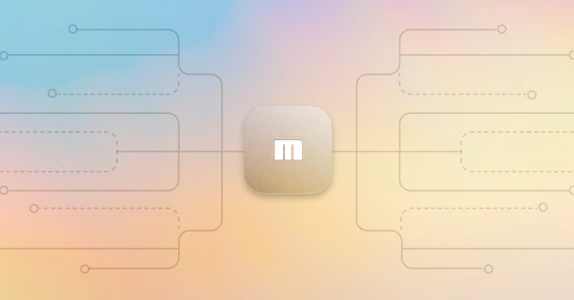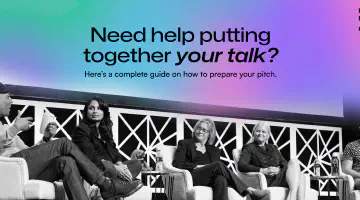
What a decade of transformation means for the future of payments
If I were still using paper checks, I’d write the date as 2020, because the last few years have been a blur. Somehow the world feels both suspended in time while making giant leaps in innovation at break-neck speeds. And even though I’d put Moov in the latter category, it’s easy to lose sight of the big picture when you’re chasing the goals right in front of you
When I sit back to reflect on it all, I’m first and foremost grateful. So much has happened with Moov over the last few years and I’m beyond thankful for my family, our team, and all our supporters for believing in us. I’m also astonished at the progress of the payments space as a whole, and when taking a longer view of the change, there are some important lessons to learn.
So, instead of focusing on what’s changed over the last year, I’d like to step back and recognize the monumental changes that have happened over the last decade.
And so much has happened.
A comprehensive retrospective is probably too long to read. But for the tl;dr version, I’d like to share three areas that I believe provoked seismic shifts in payments—as well as what we can learn from them.
Peer-2-Peer (P2P) payments
I might be aging myself here, but Peer-2-Peer payments have been around since the early 90s. Some of you may remember bill pay pioneer CheckFree, which let you pay your friends and family through your bank. If the stars were properly aligned, it would automate an ACH payment for you. Unfortunately, a lot of banks and billers were hesitant to participate in any kind of electronic funds transfer system (as I said, a lot has changed), so the system relied heavily on snail mail and paper checks. It was neither immediate nor was it a great experience for users on either side of the transaction.
Then, in 2010, Popmoney, People Pay, and iPay enabled consumers to look up payees easily through mobile numbers or email addresses. They facilitated payments via ACH without sharing account or routing numbers between the two parties. This was a huge leap forward.
Venmo launched around the same time and, unlike its competitors, Venmo didn’t charge users to send or receive money. Today, Venmo exceeds $260B in annualized processing volume across half a billion global users.
So what enabled P2P to grow from paper checks and stalled adoption into a two-trillion-dollar industry with iconic brands like Venmo and CashApp?
First, successful brands stopped requiring a bank account to sign up. The only time you’d need to add an account number was for withdrawing funds. They also changed the game by making funds immediately available. Consumers could access money in their wallets, even if the funds weren’t in the bank. Plus, Venmo and CashApp both had incredible user experiences. Finding a payee and requesting payment was quick and easy, and this made adoption virtually viral. Last but by no means least, they were flexible. Consumers could choose how to pay or be paid—wallet to bank, push to debit card, or on-platform spend.
What’s the big takeaway here?
P2P played a huge part in establishing consumers’ expectations of ease and instancy in payments. These expectations are spreading into B2C and B2B payments, and there’s no going back. Across the board, payments will continue to grow simpler and faster.
Onboarding and underwriting
Most of the major credit card companies launched between 1958 and 1966. For forty years—especially from an onboarding and underwriting point of view—things stayed basically the same.
Then, in 2009, Square and Stripe appeared. They changed the face of payments by creating a drastically new way of onboarding and underwriting their customers. Within two years, the first official PayFac programs were launched by MasterCard and Visa. The entire industry took a giant leap forward.
And the change kept coming. In 2011, Stripe was the first to market with an instant approval process for merchant underwriting. Before then, every transaction had a mandatory seven-day waiting period before merchants could receive their funds. Now, Square has a multi-billion dollar net worth and Stripe’s value is $50 billion.
What made this possible?
In a word, value. The payments industry didn’t think anyone would pay Stripe’s and Square’s processing fees—but both companies were more than just payment processors. They made it easier to create a new business or revenue source. There was real, tangible value to that.
Stripe also made it possible to start selling online in a single day, and Square made it possible for millions of small businesses to accept physical card payments. Before Square, to accept a physical credit card you needed six months of bank statements, a physical address for the card reader, a capital reserve account, and a significant investment in a POS system.
These companies recognized that onboarding was step one to accepting payments—to actually doing business—and onboarding was too difficult. So, they set out to define a new standard and actually make it easier.
Stripe’s CEO Patrick Collison described the effort to create instant onboarding as a very heavy lift, saying, “There’s a good reason that no one had done this before. But it’s also the one part of the product we’re unwilling to compromise. We always wanted a payment system that we could just go live with immediately and not have to fax documents or wait till the next day or call us.”
So, what’s the takeaway for onboarding?
After a status quo that lasted decades, transformation is here. There’s no going back, but there’s still more to do. Batch file transfers and even fax machines are still a part of payments. In the same way that Stripe and Square took onboarding and underwriting into the digital age, it’s time to modernize payments beyond the transaction. This means improving processes, operations, and predictability for businesses. This is absolutely critical to creating a customer experience worthy of the digital age.
Expanding access into underserved segments
By removing barriers to accepting payments, Stripe and Square created huge opportunities for previously underserved small businesses. We’ve seen improved access for underserved consumers as well—in both investing and banking.
Not long ago, anyone who wanted to buy or sell stock would be charged $5 to $10 per trade, and would have to invest a minimum of $500 just to open the required account. This significantly restricted access to investing for lower and even middle-income consumers.
Then, in 2015, Robinhood launched a “free” trading app. In less than a decade, they’ve grown from half a million users to 23 million, with a value of almost $8 billion. They continue to expand their offerings, including their Cash Card, which enables consumers to automatically invest through purchases. By removing financial barriers and automating processes, Robinhood has reshaped investing from impenetrable to effortless.
The neo-bank Chime was launched in 2014 to address a different kind of underserved population. Cash-strapped, mobile-focused millennials wanted to avoid monthly fees, minimum balances, and overdraft fees—and they wanted to handle their banking on their smartphones. Chime made all of this possible. Their “SpotMe” overdraft protection provides a $200 safety net and their early deposit feature helps users get their paychecks up to two days earlier.
Chime now serves over 14.5 million customers—8 million of whom consider the platform their primary bank—and they’re worth $25 billion. Millennials, it turns out, weren’t the only ones looking for a way out of overdraft fees. Even in 2021, after years of competition and pressure to lower or end them, overdraft fees continued to cost Americans more than $15 billion combined. And, worse, they drove a lot of people out of banking altogether.
Considering all of the above, what’s the takeaway?
Help those who need help. Serve those who are underserved. Do it because it’s the right thing to do, but also because it’s critical for the health of the economy. In all of the examples above, enabling access to financial services helped millions of people, but it also built multi-billion dollar businesses and transformed the entire financial landscape.
It may be as simple as offering small businesses a faster payment option, so they don’t have to take out a high-interest rate loan, or providing an instant loan that keeps a consumer away from an expensive cash advance. It’s important to never forget the impact and outcomes we can create when we innovate with the end user in mind.
The success of future platforms will depend on the lessons illustrated above: the speed and simplicity of P2P; the removal of barriers that improved onboarding and underwriting; and the marriage of need and opportunity that we’ve seen in the expansion of services to the underserved.
Between The Clearing House RTP and FedNow’s launch later this year, every US bank account will have access to real-time settlement 24/7/365. Real-time payments will be to legacy batch payments what 5G wifi is to dial-up—meaning the industry is laying the groundwork for a new infrastructure that can change how we transact and how businesses exchange data about money transfers.
But these networks are just the rails. It’s up to fintech companies to connect the dots between use cases and infrastructure to create the future of payments. It’s the perfect time for innovators to step in and make amazing new things happen.
At Moov, we want to help those innovators—that’s why improving access is mission critical. When knowledge and technology are trapped behind lock and key, progress is inhibited. With our open source libraries, robust docs, and educational developer-focused fintech_devcon conference, we’re hoping to share the type of knowledge that transforms the fintech space. I can’t wait to look back in another decade and see just how far we’ve come.





